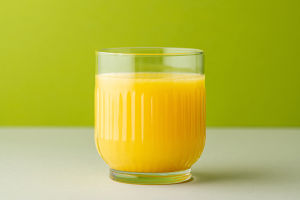The flower language of yellow tulip is cheerfulness, wealth, elegance and sunshine. Its flower shape is elegant and its color is very bright, and it is deeply loved by people. People will give tulips to lovers to represent the cherishing of feelings.
People will also give yellow tulips to friends, colleagues, or people who are in a low period. It represents hope and tells the other party to be positive and optimistic about everything.
Many people think that there is only one variety of tulips and they all look the same. In fact, if you know more about them, you will know that there are many varieties of tulips.
1. Double tulip
Compared with single-petal tulips, double-petal tulips have more complex beauty, and the layered petals add a retro beauty on the basis of elegance.
2. Raw edge tulips
Raw edge tulips, also known as fringed tulips, are more like regular tulips with petals cut into pieces, like tulips wearing fringed skirts. Raw edge tulips are also divided into two varieties: single petal and double petal.
3. Brownie Tulips
Brownie tulips are called tulips from oil paintings. They have a low-key caramel brown color and a streamlined and clear feather texture. They are like fairy flowers from French retro oil paintings. They have a high-end retro feel with filters and exude a noble atmosphere.
4. Salmon Tulips
Salmon tulips, as the name suggests, are tulips the same color as salmon. It is orange-pink, composed of 30% pink and 70% orange, and it looks gentle and quiet, very temperament.
5. Parrot Tulip
The parrot tulip is the most precious species in the tulip series. Compared with the common tulip, the petals of the parrot tulip overlap and curl irregularly, which is more luxurious and beautiful.
6. Lily Tulip
Lily tulips, also known as curly tulips, are like the slightly curled and elegant skirts of girls, which are more agile than regular tulips.
In life, if we want to grow tulips in water, it is easy to raise them, but we need to pay attention to these aspects.
1. Frequency of water change
Tulips are not the kind of flowers that absorb water, and their blooming seasons are all in the cold season, so the amount of water in the entire vase can be between 1/3 and 1/2. The frequency of subsequent water changes is to change the water every 2-3 days.
2. Pruning
The outermost layer of a tulip is a "skin", which is actually its leaves. The leaves are soaked in water, which is easy to breed bacteria, so you need to use flower scissors to remove it. In this step, you can also tear off the "skin" by hand. Some people may be allergic to tulips. It is recommended that flower lovers with allergies wear gloves.
Where should the roots be cut? Generally speaking, let the flower head be 10-12 cm along the upper part of the vase. This can maintain a certain aesthetics, so that the flower head is supported enough so that it does not droop down.
After cutting the roots, you can either put them into the vase one by one, or you can use a spiral technique to put them into the vase like a florist. The advantage of this is that the spiral direction of the flower diameter will appear beautiful in the vase viewing effect.
3. Lighting
Tulips like to bask in the sun, and they are not afraid of the sun. But it is afraid of wind, so try to put it in a place with sunlight but shelter from the wind. The petals of the tulips are easy to fall after they are fried, so try not to move the vase.
If the tulip stems you receive are soft and the flower heads are wilted, wrap them in newspaper to fix them or put them in water for rest. The next day you will see it restored to its slim appearance. Don't worry if the bud is small, it will grow slowly.
One thing that sets tulips apart from other flowers is that as a cut flower, they will continue to grow taller in a vase! A few centimeters below the flower head is its heightened part.
When you bottle the tulip on the first day, you may be pleasantly surprised to see that it is taller and straighter than the day before the next morning. This kind of growing surprise is the unexpected fun that bottled tulips bring to our lives!


